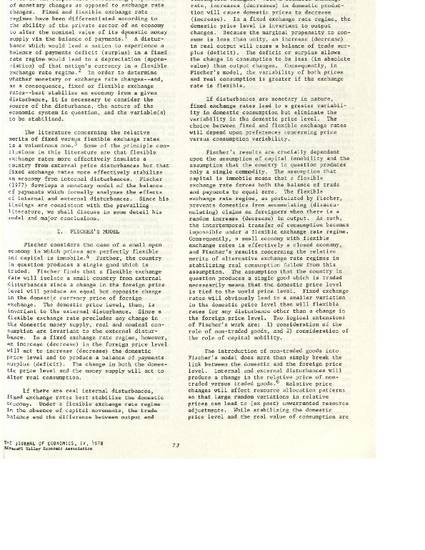
One of the central issues in the ongoing debate concerning fixed versus flexible exchange rates is the comparative stabilizing properties of monetary changes as opposed to exchange rate changes. Fixed and flexible exchange rate regimes have been differentiated according to the ability of the private sector of an economy to alter the nominal value of its domestic money supply via the balance of payments. A disturbance which would lead a nation to experience a balance of payments deficit (surplus) in a fixed rate regime would lead to a depreciation (appreciation) of that nation's currency in a flexible exchange rate regime .2 In order to determine whether monetary or exchange rate changes--and, as a consequence, fixed or flexible exchange rates--best stabilize an economy from a given disturbance, it is necessary to consider the source of the disturbance, the nature of the economic system in question, and the variable(s) to be stabilized.
Available at: http://works.bepress.com/harvey-lapan/53/

This is an article from Journal of Economics 4 (1978): 73. Posted with permission.